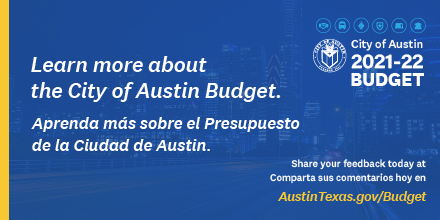On a sunny afternoon, cadets who are hoping to become Austin’s newest police officers mowed grass, trimmed bushes, and pulled weeds at the Edgar Fincher III Program Garden. Their work helped prepare the garden for the next planting cycle and planted seeds to grow stronger community bonds.
At the Austin Central Library, a panel discussion leads to two strangers, a community leader and a police cadet to conn…
One hundred recruits started their journey toward becoming police officers Monday as the Austin Police Department kicked off its 144th cadet class. The 34-week session will be a pilot class, the first to complete training using the Police Academy’s new curriculum and expanded community engagement programming.
Last month, Austin City Council approved moving forward with resuming cadet classes after accepting City Manager Spencer Cronk’s blueprint for a reimagined academy. The blueprint outlined a collaborative and on-going process of transforming the academy and creating a core focus on community input, emphasizing servant leadership, and curricu…
Learn More about the City of Austin Budget and take our survey!

It’s that time of year, and the City of Austin wants to encourage our residents to weigh-in as the City plans for its next Budget. It’s important that we hear from you and your families to help the City prioritize services that impact how you live, work, play, shop and more.
To learn mo…
Public input is critical to creating a public safety capability that works for everyone. The City and the RPS Team continue to provide residents and community leaders with a variety of ways to make their voices heard. The hiring of a new police chief to lead the Austin Police Department provides just such an opportunity for resident feedback.
Background
On March 22, 2021 City Manager Spencer Cronk announced the City’s launch of the Chief of Police recruitment. To lead this recruitment process, City Manager Cronk has engaged Ralph Andersen & Associates, who has assisted 35 other cities in hiring their Police Chiefs across the cou…
The Office of Police Oversight hosted a community event to review Austin Police Department use of force policies, collect input, and make new recommendations.
The virtual Zoom meeting was held on April 28, 2021 from 6 - 7:30 p.m. A recording of the meeting is available here.
The Austin City Council today approved moving forward with a reimagined Austin Police Department (APD) training academy in June. The 144th cadet class will be a pilot class, the first to complete training with the Academy’s new curriculum and expanded community engagement programming.
In March, the City Council approved the City Manager’s blueprint for the reimagined academy. The blueprint outlined a collaborative and iterative process of transforming the academy and creating a core focus on community input…
The first phase of conversations on Reimagining Public Safety (RPS) between the community and City leaders concluded on January 31, 2021. These conversations were launched in September 2020 to help inform City leaders’ decisions on public safety reform. Community members were invited to submit their feedback through one of a variety of online and call-in input options, including:
- RPS Listening Session for One
- Austin 3-1-1 Reimagining Public Safety Feedback line
- RPS discussion forum on SpeakUp Austin
- RPS short survey on SpeakUp Austin
Additionally, community members and organizations were invited to host virtual, scenario-based communit…
The Austin City Council today approved a series of mid-year budget amendments related to Reimagining Public Safety (RPS) Initiatives. The changes, focused on realigning City services and resources to allow the Austin Police Department (APD) to focus on its core mission of law enforcement, includes the creation of a new Emergency Communications Department (ECD) to handle emergency calls.
“Today’s action allows us to take the another step in creating public safety systems which remove barriers to access for everyone in the community while providing fast, equitable and appropriate response and resources to those who call for help in their time of need,” said City Manager…
The idea of public safety underlies numerous public policy decisions and laws, as well as many of the choices that each of us make in our everyday lives. But, what is it? What comes to mind when you hear the phrase “public safety”?
Legal scholars define public safety as “the protection of the general public,” and they reference groups like police officers and firefighters as Public Safety Officers. Many government…
In November of 2020, as directed by Council Resolution No. 20191205-066, the Office of Police Oversight, in consultation with the Office of the City Manager, retained Kroll Associates, Inc. to review and evaluate the Austin Police Department on the extent to which racism and discrimination are present in the protocols, practices, and behaviors of the department.
The initial phase of the review was an assessment of the APD Training Academy and its ability to prepare cadets for policing in a multi-ethnic, diverse, urban population consistent with best practices.
Among the findings of this initial evaluation are the need for APD to:
- Increase racial, gender an…
